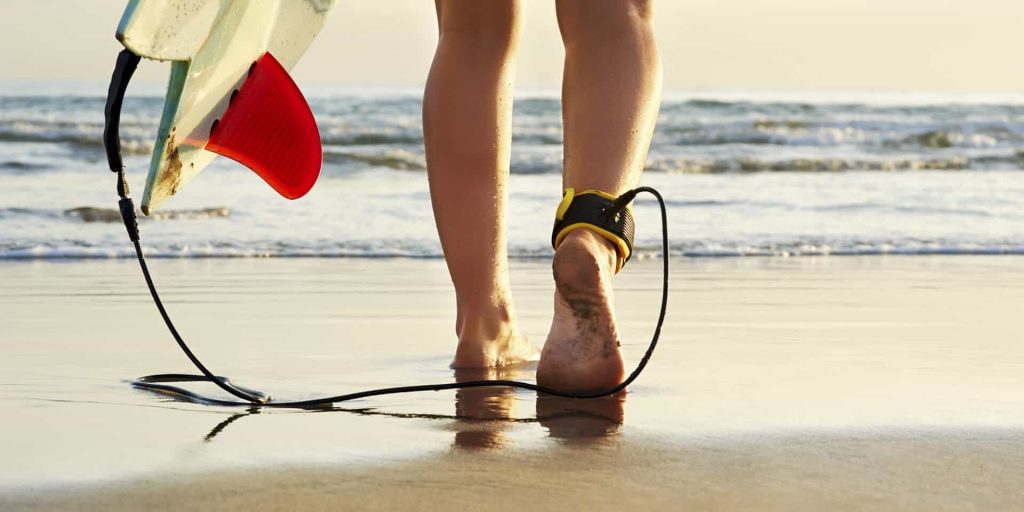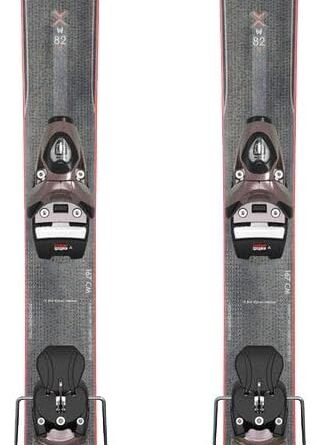
Imagine yourself catching the perfect wave, riding the crest of the ocean’s power and the rush of adrenaline through your veins. But have you ever wondered about the difference between a surfboard leash and a leg rope? In the world of surfing, these two terms are often used interchangeably, causing confusion among beginners and enthusiasts alike. In this article, we will unravel the mystery and shed light on the dissimilarities between these essential tools for surfers. Let’s dive in and discover the nuances that set them apart, ensuring you can ride the waves safely and with confidence.

This image is property of cdn.shopify.com.
Surfboard Leash
A surfboard leash, also known as a leg rope, is an essential piece of equipment for any surfer. It is a cord that attaches the surfer to their surfboard, ensuring that the board does not get washed away when they wipe out or fall off. This important tool provides safety, convenience, and peace of mind for surfers of all levels.
Definition
A surfboard leash is a flexible cord made of durable materials, such as urethane, that attaches to the surfer’s ankle or calf and the tail of the surfboard. It is designed to prevent the board from drifting away after a wipeout or when the surfer falls off the board. The leash allows the surfer to maintain a close proximity to the board and quickly retrieve it, making it an indispensable tool in the water.
Purpose
The main purpose of a surfboard leash is to keep the surfer connected to their board at all times. This prevents the board from becoming a hazard to other surfers, swimmers, or marine life. In addition to safety, a leash also adds a level of convenience by eliminating the need to chase after a loose board in the water. It allows the surfer to focus on catching waves and enjoying the surf without worrying about losing their board.
Construction
Surfboard leashes are typically made of high-quality urethane or similar materials that offer durability and flexibility. The urethane cord resists breaking or snapping under the pressure of strong waves or wipeouts. The cord is often secured to the surfer’s ankle or calf with a padded cuff that provides comfort and prevents irritation. Some leashes may also have additional features, such as swivels to reduce tangling, padded ankle straps for extra comfort, or reflective strips for enhanced visibility.
Attachment
The leash is attached to the surfboard through a leash plug, which is a small plastic or fiberglass fitting located near the tail of the board. The leash is threaded through the leash plug and secured with a leash string or knot. It is crucial to ensure a strong and secure attachment to prevent the leash from detaching during surf sessions.
Types of Leashes
There are various types of surfboard leashes available, each designed to cater to specific surfing conditions and preferences. The three main types include:
-
Regular Leash: This is the most common type of leash, suitable for everyday surfing in moderate wave conditions. It offers a good balance of strength and flexibility, making it ideal for most surfers.
-
Big Wave Leash: As the name suggests, this leash is specifically designed for surfing in larger, more powerful waves. It is thicker and stronger than a regular leash, providing extra security and preventing it from snapping under high pressure.
-
Comp Leash: This leash is designed for high-performance surfing, offering minimal drag and maximum flexibility. It is usually thinner and lighter than regular leashes, catering to surfers who prioritize maneuverability and speed.
Leg Rope
While the terms “surfboard leash” and “leg rope” are often used interchangeably, there is no significant difference between the two. Leg rope is simply another name for a surfboard leash. This term is commonly used in countries like Australia and New Zealand.
Definition
A leg rope is a flexible cord that connects a surfer to their surfboard, preventing the board from drifting away. It is typically attached to the surfer’s ankle or calf and the tail of the surfboard. The leg rope allows the surfer to maintain close proximity to the board and quickly retrieve it after a wipeout or fall.
Purpose
The purpose of a leg rope is the same as that of a surfboard leash. It provides safety and convenience to surfers of all levels by ensuring that the board remains within reach at all times. Additionally, it helps prevent the board from becoming a hazard to others in the water and minimizes the risk of injury caused by loose boards.
Construction
Leg ropes are constructed using durable materials such as urethane, similar to surfboard leashes. The cord is designed to be strong enough to withstand the forces of waves and wipeouts, while also being flexible to allow for ease of movement. The attachment cuff is padded for comfort and prevents irritation during prolonged use.
Attachment
Like the surfboard leash, the leg rope is attached to the surfboard through a leash plug near the tail of the board. The leash is threaded through the leash plug and secured with a knot or leash string. It is crucial to ensure a secure attachment to prevent the leash from detaching during surfing.
Types of Leg Ropes
The types of leg ropes available are the same as those for surfboard leashes. Regular leashes, big wave leashes, and comp leashes cater to different surfing conditions and preferences. The choice of leg rope depends on the individual surfer’s needs and the specific requirements of the surf session.
Key Differences
While surfboard leashes and leg ropes serve the same purpose and are essentially the same thing, there are some key differences to consider. These include length, attachment point, comfort, use, and safety features.
Length
Surfboard leashes and leg ropes come in different lengths, ranging from around 5 feet to over 9 feet. The length of the leash should be chosen based on the type of board and the intended style of surfing. Longer leashes are suitable for longboards and for surfers who prefer to ride further from their board. Shorter leashes are typically used for shortboards or in more crowded surf conditions.
Attachment Point
The attachment point of the leash to the surfer’s body also differs, although not significantly. Some surfers prefer to attach the leash to their ankle, while others prefer to attach it to their calf. The choice is based on personal preference and comfort.
Comfort
Both surfboard leashes and leg ropes feature padded cuffs or ankle straps to provide comfort and prevent chafing. However, the design and level of padding may vary, so it is important to choose a leash that feels comfortable during extended surf sessions.
Use
The terms “surfboard leash” and “leg rope” are used interchangeably in most cases, but it is worth noting that “leg rope” is primarily used in Australia and New Zealand. The choice of terminology depends on the individual surfer and the region they are from.
Safety Features
Surfboard leashes and leg ropes may have additional safety features to enhance their functionality. These can include double swivels to reduce tangling, reflective strips for increased visibility, or even emergency release systems for situations where quick detachment from the board is necessary.
How to Choose the Right Leash for You
When it comes to choosing the right leash for your needs, there are a few key factors to consider. These include your surfing level, wave conditions, board type, and the length of the leash.
Surfing Level
Consider your surfing level when selecting a leash. Beginners may opt for a longer leash to provide more stability and prevent the board from drifting away during learning stages. As you progress and gain more experience, you can adjust the length accordingly to suit your preferred style and level of control.
Wave Conditions
Wave conditions play a crucial role in leash selection. For smaller, less powerful waves, a regular leash is usually sufficient. However, if you frequently surf in larger, more powerful waves, a big wave leash will provide the necessary strength and durability to withstand the forces exerted during wipeouts.
Board Type
Different board types require different leash lengths and thicknesses. Longboards typically benefit from longer leashes to accommodate the increased distance between the surfer and the board. Shortboards, on the other hand, often utilize shorter leashes to minimize drag and potential entanglements.
Leash Length
The length of the leash should be determined by your personal preference and the conditions in which you surf. Longer leashes provide freedom of movement and allow you to ride further from your board, while shorter leashes offer more control in crowded lineups. Consider your surfing style and the conditions you commonly encounter to select the appropriate leash length.

This image is property of www.saltwater-dreaming.com.
Tips for Proper Use and Maintenance
To ensure the longevity and effectiveness of your surfboard leash or leg rope, it is important to follow some essential tips for proper use and maintenance.
Proper Attachment
Always make sure your leash is securely attached to your surfboard using a leash plug and a reliable knot or leash string. Before entering the water, check the leash attachments to ensure they are secure and show no signs of wear or damage.
Avoiding Tangles
To prevent tangling, always keep the leash free from knots or loops when not in use. Additionally, pay attention to the leash swivels, ensuring they are functioning properly and not causing the leash to twist unnecessarily.
Inspecting for Wear
Regularly inspect your leash for signs of wear, such as fraying, stretching, or weakened areas. Replace the leash if you notice any damage or deterioration that may compromise its strength and reliability.
Replacing Leashes
Leashes are subjected to significant wear and tear, so it is essential to replace them periodically to maintain optimal safety and performance. The frequency of replacement depends on the frequency of use and the conditions in which you surf. A general guideline is to replace your leash every 6-12 months or sooner if required.
Common FAQs
Here are answers to some common questions surfers may have regarding surfboard leashes and leg ropes:
Can I surf without a leash?
While it is technically possible to surf without a leash, it is not recommended. Surfboard leashes provide safety for both the surfer and others in the water by preventing loose boards from becoming hazards. Additionally, a leash allows you to quickly retrieve your board after a wipeout, saving you time and energy.
Do I need different leashes for different board sizes?
The length and thickness of the leash can vary depending on the type of board you are using. Longboards generally require longer leashes, while shortboards benefit from shorter leashes. It is important to choose a leash size that is appropriate for your board to ensure optimal performance.
Can I use a leash on a bodyboard?
Yes, leashes can also be used on bodyboards. However, bodyboarding-specific leashes are recommended as they are specifically designed to withstand the unique demands and forces associated with bodyboarding.
Can I use any leg rope for any board?
While it is possible to use any leg rope on any board, it is essential to choose a leg rope that is suitable for your board size and style of surfing. Leashes are designed to cater to specific conditions and surfing preferences, so selecting the appropriate leash will enhance your overall surfing experience.

This image is property of www.stokedfortravel.com.
Conclusion
In conclusion, whether you refer to it as a surfboard leash or a leg rope, this piece of equipment is an essential tool for surfers of all levels. It provides safety, convenience, and peace of mind, allowing surfers to focus on catching waves and enjoying their time in the water. By understanding the differences, choosing the right leash for your needs, and maintaining it properly, you can ensure a safe and enjoyable surf session every time. So be sure to invest in a high-quality leash and make it an integral part of your surfing gear. Happy surfing!






